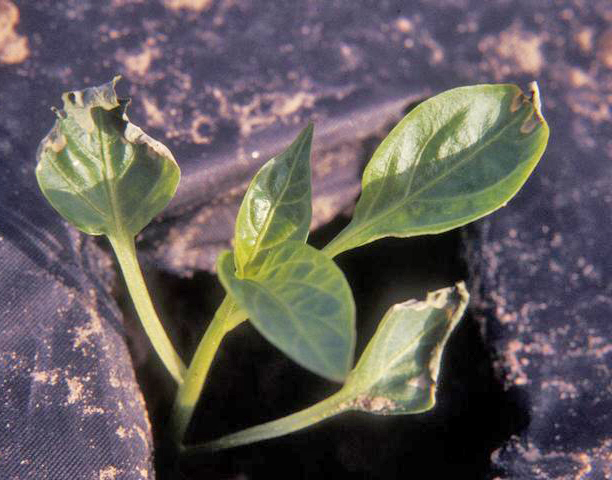Hardening off vegetable transplants is easy!
Help your vegetable seedlings adapt to their new garden home with the hardening off process.

As we approach May and June frost-free dates across Michigan, it is time to prepare for transplanting warm season vegetable plants such tomatoes, peppers and squash that do not tolerate frost. Gardeners using vegetable transplants should plan for the process of hardening off their seedlings to outdoor conditions. Vegetable transplants are started indoors before the frost-free date to protect them from climate extremes outdoors. Indoor plants are not adapted to outdoor climate conditions and rely on their gardener to help them transition to light, heat and wind of the outdoor garden.
While vegetable transplants can eventually thrive in a sunny spot in your yard or patio, you will increase your chances of success by gradually easing them into your garden conditions. Each plant species has an ideal range for light, temperature and moisture level. Rapid swings between climate extremes, even if within its ideal range, can lead to damage and stress. An indoor-grown plant thrust into full sun may wilt or have tissue browning on the leaves. Tender seedlings that suddenly transition to colder or hotter temperatures may become stunted, experience leaf discoloration or die. The goal of hardening off is to help your plants adapt to their new garden home without stress.

Begin hardening off seven to 10 days before your area’s frost-free date. Warm season vegetable seedlings should not be exposed to freezing or near freezing temperatures and grow best when the nights are at least 60 degrees Fahrenheit. Temperatures below 50 F can stunt some warm season crops such as melons. Keep in mind that this is a general guide to hardening plants. If you miss a day, continue when you can. Keeping plants in a wagon or other wheeled container will make this process simpler.
- Choose a spot outdoors that is shady and shielded from heavy wind. Start by placing your transplants outdoors for an hour in this protected spot before returning them indoors. Protection from the sun can be the dappled shade of a tree, the awning of a porch, an open garage, or a shade cloth you have suspended over them.
- Each day, increase the amount of light and the total time spent outside by 1-2 hours. Gradually increase the light until the plants spend the entire day in the sun bringing them in each night. As you increase the time in the sun, monitor the appearance of your plants for signs of stress such as wilting.
- After the transplants have spent several full days in the sun, leave them outside for several days and nights.
- Your seedlings are now hardened and are ready for planting.
You can access lawn and garden tip sheets, articles and newsletters from Michigan State University Extension at our website Gardening in Michigan. For direct assistance, upload questions and pictures through our Ask an Expert resource or call the toll-free Lawn and Garden Hotline at 1-888-678-3464.



 Print
Print Email
Email




